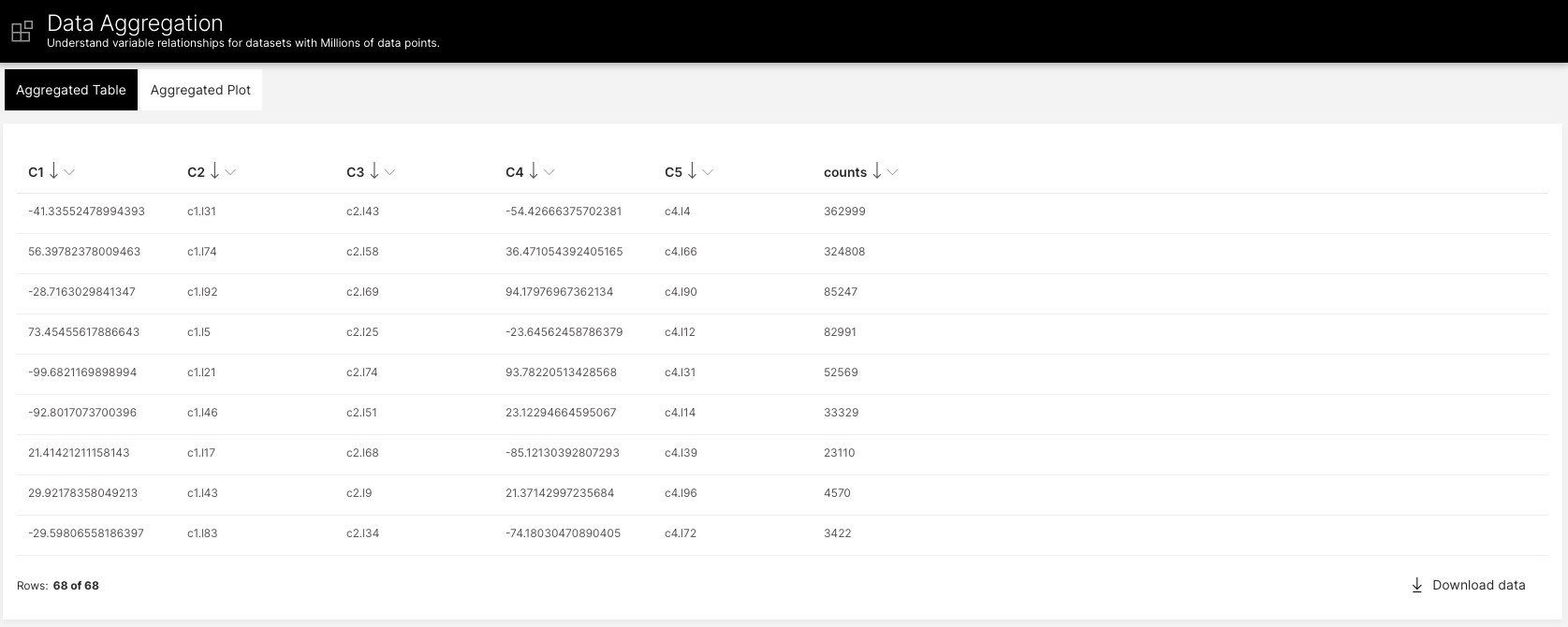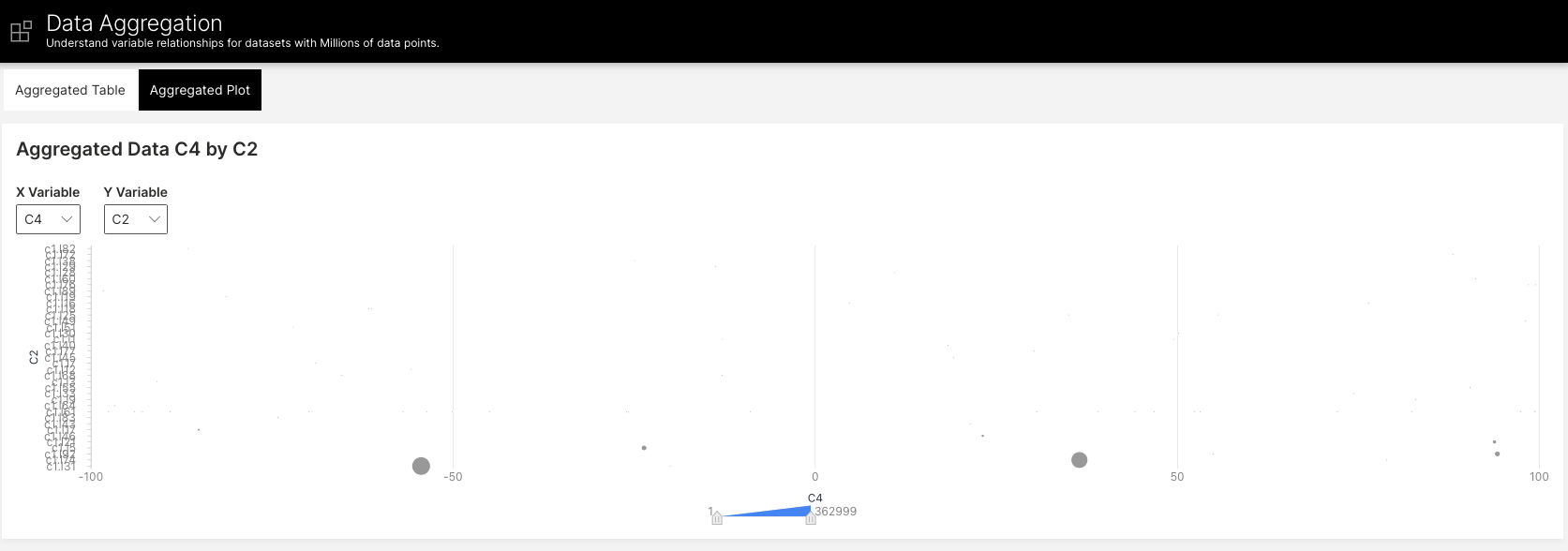H2O Wave allows for easily building front ends to your projects. I was recently inspired by this tutorial notebook which explains how to use open source H2O-3 for finding anomalies in a dataset. Part of this process is using the H2O-3 aggregator function to visualize relationships in large datasets. A data scientist is at home in a Jupyter Notebook, but we could make it easier for ourselves and analysts or other business users to run this code and benefit from the H2O-3 aggregator function by building a front-end using H2O Wave.
Below you can see our data aggregation and visualization app. Currently, the app itself is creating a 1M row dataset as a demo. We can see that the H2O-3 aggregation function reduces this down into 68 exemplar rows and tells us how many of the original rows fall into each exemplar.


Resources
You can find the full source code for this app on GitHub.
Interested in seeing what it takes to make this type of application? In a 1 hour live-coding session we were able to:
- Create the layout of our application
- Create two interactive tabs for navigating in the app
- Create a table view for a dataset
- Create a plot view for a dataset
Here's the replay:
Ideas for Improvement
For this app to be fully useful to our business users, we would probably want to add the following features:
- Easily add data: allow users to aggregate and visualize on their own datasets
- File upload from local machine
- Connect to common SQL warehouses
- Connect to common cloud data stores like s3
- Improved backend performance
- Connect to a production H2O-3 cluster rather than creating a cluster on the local machine of the H2O Wave server
- Added user control
- Let the end user decide parameters of the aggregator function like how many exemplar rows to attempt to make
- Improved and new visualizations
- Add new visualizations based on different data types
- Robustness
- Add unit tests!
If you do decide to work on this project, or use this as a template for your own projects, be sure to tag us on Twitter @h2o_wave or post as a Show and Tell on our GitHub discussions!